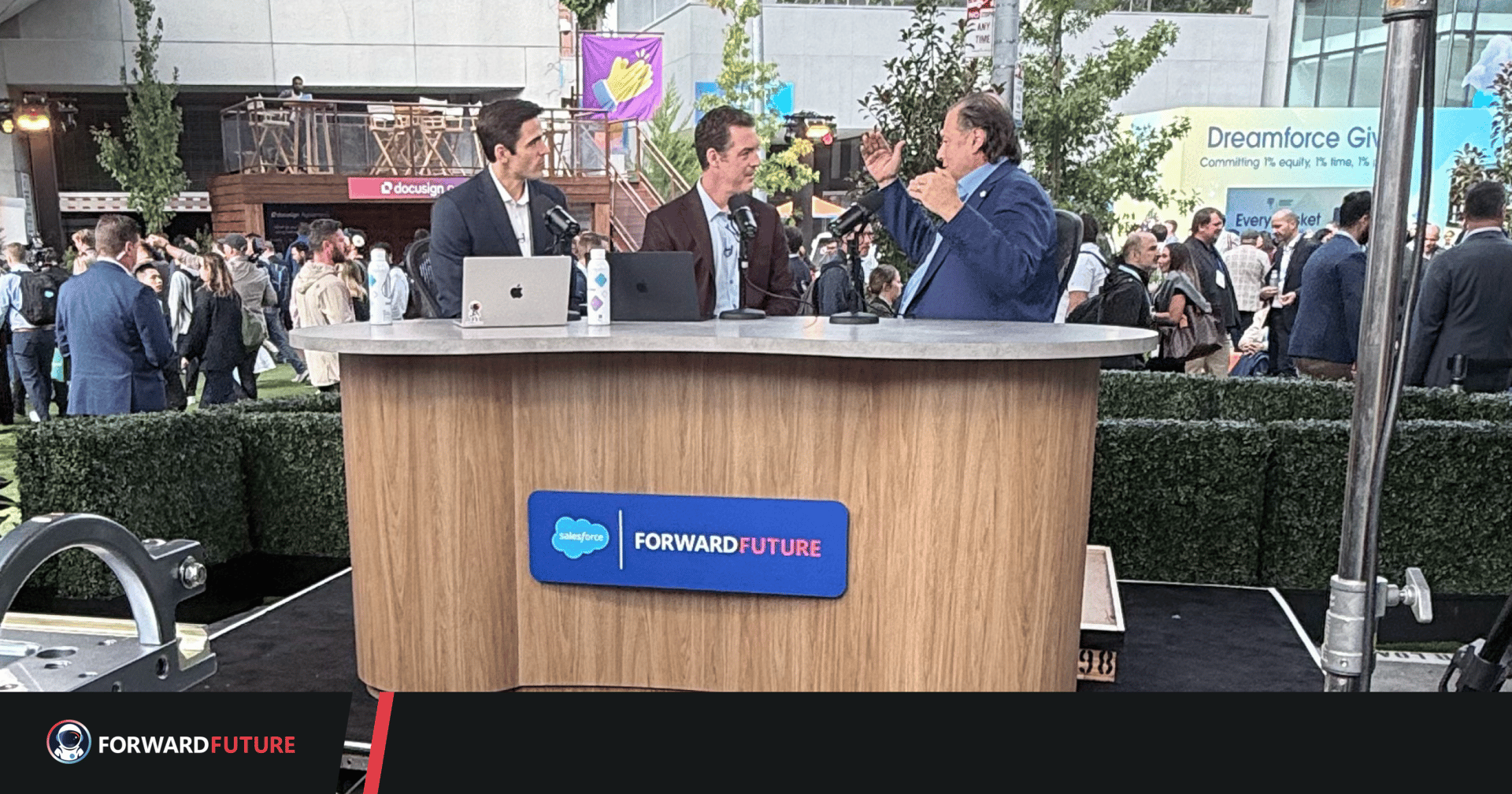
Estimated Read Time: 6 minutes
Our Conversation with Marc Benioff at Dreamforce 2025
During our live show at Dreamforce 2025, we sat down with Marc Benioff, CEO and founder of Salesforce, for a wide-ranging conversation that cut through the AI hype to explore what's really happening in enterprise technology, and in San Francisco itself.
San Francisco's Resilience
Benioff made clear why Salesforce has kept Dreamforce in San Francisco for 23 consecutive years, even as other major tech conferences fled to Las Vegas. He compared the current AI boom to the city's original gold rush, arguing that San Francisco's spirit of adventure and innovation continues to draw risk-takers and builders. With over 45,000 attendees at this year's conference, he pointed to the AI boom as the latest wave in the city's cyclical pattern of renewal.
His commitment extends beyond rhetoric. Salesforce and Benioff personally have contributed over a billion dollars in local philanthropy—more than any company in the city's history. He shared details of these investments, from two children's hospitals to $150 million in public school funding, including personally rebuilding the playground at Presidio Middle School where crews had to remove asphalt untouched since 1900.
The Reality of AI Deployment
Benioff discussed Salesforce's vision of the "agentic enterprise" but grounded it in actual deployment data. The company's service organization now employs fewer human representatives than a year ago, yet delivered 1.6 million customer conversations through human agents and another 1.6 million through AI agents in the last nine months—with comparable satisfaction scores. Meanwhile, Salesforce has more salespeople than ever, illustrating how AI redistributes capacity rather than simply eliminating jobs.
He was candid about why complex B2B relationships still require humans: "There's no agent here that's talking to me. Maybe next year the Figure robot will be asking me questions." The comment captured his balance of optimism and realism.
Technical Limitations and What Comes Next
Benioff articulated clear technical constraints that often get glossed over in AI discourse. Large language models are fundamentally built on language and words, which creates structural limitations. He pointed to research from Fei-Fei Li and other leading researchers on "world models"—systems that understand spatial relationships, physical dynamics, and causal structures—as the next frontier. But he emphasized we're not there yet.
He questioned whether we've truly reached artificial general intelligence, noting the industry has largely abandoned the term because current systems don't match the original definition: self-engineering, self-modifying systems that operate autonomously without human intervention.
The Messy Middle of Work Transformation
When we discussed the future of work, Benioff laid out a practical philosophy: AI isn't eliminating white-collar work—it's restructuring how work gets done, with humans remaining "in the loop" across virtually every domain. Even in software development, where AI coding assistants show remarkable capabilities, humans still provide direction, review output, and make judgment calls.
He shared how he'd used an LLM to prepare for a recent conversation with Anthropic CEO Dario Amodei, discussing technical details beforehand. But the actual interview still required human curiosity, spontaneous questions, and the ability to pursue unexpected conversational threads.
Connecting Abundance to Responsibility
Benioff connected technological abundance directly to social responsibility, framing Salesforce's billion-dollar philanthropic investments as an integrated response to a central question: in a world of increasing technological abundance, how do we ensure the benefits reach everyone? He rejected the false choice between innovation and equity, arguing that San Francisco can simultaneously be a center of AI development and a city with excellent public schools and healthcare.
The Takeaway
Throughout our conversation, Benioff held two perspectives simultaneously: aggressive investment in AI development paired with realistic assessment of current limitations. He's genuinely excited about AI's potential and betting his company on it—Salesforce runs 62,000 nonprofits for free, has facilitated 10 million volunteer hours globally, and inspired 19,000 companies to adopt its 1-1-1 philanthropic model. But he refused to pretend we're further along than we actually are, offering the kind of clear-eyed optimism that felt refreshing amid the conference buzz.
As he put it simply: "We need to be realistic about what large language models can do." In an industry prone to overstatement, that clarity stood out.

Nick Wentz
I've spent the last decade+ building and scaling technology companies—sometimes as a founder, other times leading marketing. These days, I advise early-stage startups and mentor aspiring founders. But my main focus is Forward Future, where we’re on a mission to make AI work for every human.
👉 Connect with me on LinkedIn

